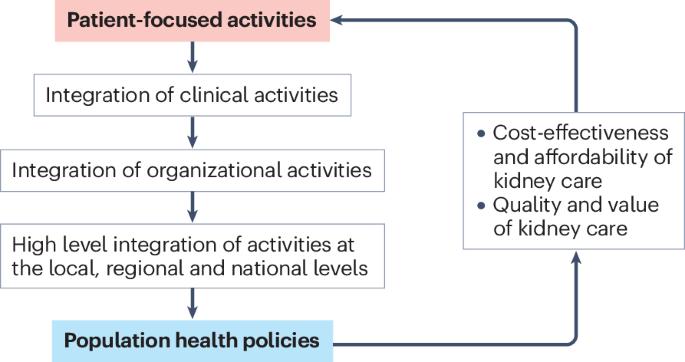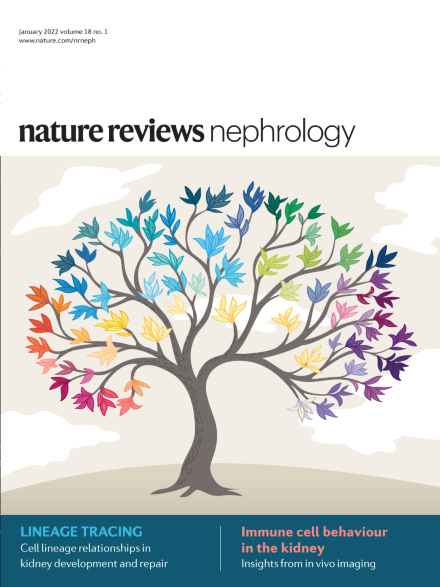肾脏疾病科学与护理的新时代
IF 28.6
1区 医学
Q1 UROLOGY & NEPHROLOGY
引用次数: 0
摘要
过去五十年来,肾脏病学的基础、转化和临床研究取得了显著进展。然而,许多挑战依然存在,包括肾脏疾病早期检测的障碍、获得医疗服务方面的差距以及对现有和新兴疗法反应的差异。药物开发、研究技术、组织工程和再生医学方面的创新有可能改善患者的治疗效果。令人振奋的前景包括:可用于减缓或阻止慢性肾脏病进展的新药的出现;可模仿健康肾脏功能的生物人工肾脏的开发;以及可利用受体细胞制造可移植肾脏的组织工程技术,从而消除排斥风险。细胞和基因疗法有可能用于肾脏组织的再生和修复。此外,约有 30% 的肾病病例是单基因病,有可能利用这些基因医学方法进行治疗。涉及肾脏的全身性疾病,如糖尿病和高血压,也有可能采用这些疗法。持续的投资、交流、合作以及创新成果的转化对于充分发挥其潜力至关重要。此外,在探索大型数据集、实施科学和定性方法学方面日益成熟的技术将提高实施变革性肾脏健康战略的能力。本文章由计算机程序翻译,如有差异,请以英文原文为准。

A new era in the science and care of kidney diseases
Notable progress in basic, translational and clinical nephrology research has been made over the past five decades. Nonetheless, many challenges remain, including obstacles to the early detection of kidney disease, disparities in access to care and variability in responses to existing and emerging therapies. Innovations in drug development, research technologies, tissue engineering and regenerative medicine have the potential to improve patient outcomes. Exciting prospects include the availability of new drugs to slow or halt the progression of chronic kidney disease, the development of bioartificial kidneys that mimic healthy kidney functions, and tissue engineering techniques that could enable transplantable kidneys to be created from the cells of the recipient, removing the risk of rejection. Cell and gene therapies have the potential to be applied for kidney tissue regeneration and repair. In addition, about 30% of kidney disease cases are monogenic and could potentially be treated using these genetic medicine approaches. Systemic diseases that involve the kidney, such as diabetes mellitus and hypertension, might also be amenable to these treatments. Continued investment, communication, collaboration and translation of innovations are crucial to realize their full potential. In addition, increasing sophistication in exploring large datasets, implementation science, and qualitative methodologies will improve the ability to deliver transformational kidney health strategies. Despite notable progress in basic, clinical and translational nephrology research in the past 50 years, many challenges remain. In this Review, the authors provide an overview of the current status and future directions in nephrology research and patient care.
求助全文
通过发布文献求助,成功后即可免费获取论文全文。
去求助
来源期刊

Nature Reviews Nephrology
医学-泌尿学与肾脏学
CiteScore
39.00
自引率
1.20%
发文量
127
审稿时长
6-12 weeks
期刊介绍:
Nature Reviews Nephrology aims to be the premier source of reviews and commentaries for the scientific communities it serves.
It strives to publish authoritative, accessible articles.
Articles are enhanced with clearly understandable figures, tables, and other display items.
Nature Reviews Nephrology publishes Research Highlights, News & Views, Comments, Reviews, Perspectives, and Consensus Statements.
The content is relevant to nephrologists and basic science researchers.
The broad scope of the journal ensures that the work reaches the widest possible audience.
 求助内容:
求助内容: 应助结果提醒方式:
应助结果提醒方式:


